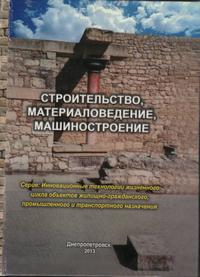Evaluation experimentale de la qualite de l’air interieur par decharge de particules en modele reduit controle : impact de la temperature et de l’humidite
Keywords:
La dispersion des données parmi les différentes études est tout à fait significative et traduit l’ampleur de la problématique du pouvoir captant des parois.Abstract
A series of experimental and numerical studies have been conducted and concern two different fields of study (test cells LaSIE and Maria CSTB). The two air exchange rates were considered: 0.5 and 1.0 vol.h-1. This study to better understand the influence of ventilation on particulate pollution, showing that the movement of particles in the indoor air depends not only on the rate of air exchange, but also used by the flow path air in the atmosphere (ventilation strategy). We found that the influence of the positions of the inlet and the air outlet was stronger for fine particles than for particles of larger size. For configuration bottom-top, the effect of doubling the rate of air exchange resulting in a doubling of the rate of deposition, while for the other configuration top-bottom, the increase in air renewal does not change the deposit particles of a diameter greater than 0.9 m and its effect is reversed for smaller particles. The last part of the study deals with the human exposure to the pollutant.References
LAI, C.K. et al « Aerosol deposition in turbulent channel flow on a regular array of three dimensional roughness elements ». J. of Aerosol Science. Vol 32,pp121-137, 2001
CHEN et al. "Evaluation of an environmental reaction chamber". Aerosol Science and Technology, 17, pp 9-24, 1992.
HARRISON, A.W. Quiescent Boundary Layer Thickness on Aerosol Enclosures under Convective Stirring Conditions.Journal of Colloid and Interfacial Science, Vol. 69, pp. 563-570, 1979.
CRUMP J.G., FLAGAN R.C. and SEINFELD J.H. Particle wall loss rates in vessels, Aerosol Sci. Techn. 2, 303-309, 1983.
NOMURA, Y., HOPKE P.K. Deposition of particles in a chamber as a function of ventilation rate, Aerosol Sci. Technol., 27, 62-72 , 1997.
NAZAROFF, W.W. et G.R. Cass Mass transport aspect of pollutant removal at indoor surfaces, Environment International, 15, 1989
K. Limam « Transferts de particules dans les ambiances ventilées» HDR Université de la Rochelle, le 21 Juin 2004.
Downloads
Published
Issue
Section
License
Редакція Видання категорично засуджує прояви плагіату в статтях та вживає всіх можливих заходів для його недопущення. Плагіат розглядається як форма порушення авторських прав і наукової етики.
При виявлені у статті більш ніж 25% запозиченого тексту без відповідних посилань та використання лапок, стаття кваліфікується як така, що містить плагіат. У цьому випадку стаття більше не розглядається редакцією, а автор отримує перше попередження.
Автори, в статтях яких повторно виявлено плагіат, не зможуть публікуватися в усіх журналах Видавництва ДВНЗ «Придніпровська державна академія будівництва та архітектури».
Автори, які публікуються у цьому журналі, погоджуються з наступними умовами:
- Автори залишають за собою право на авторство своєї роботи та передають журналу право першої публікації цієї роботи на умовах ліцензії Creative Commons Attribution License, котра дозволяє іншим особам вільно розповсюджувати опубліковану роботу з обов'язковим посиланням на авторів оригінальної роботи та першу публікацію роботи у цьому журналі.
- Автори мають право укладати самостійні додаткові угоди щодо неексклюзивного розповсюдження роботи у тому вигляді, в якому вона була опублікована цим журналом (наприклад, розміщувати роботу в електронному сховищі установи або публікувати у складі монографії), за умови збереження посилання на першу публікацію роботи у цьому журналі.
- Політика журналу дозволяє і заохочує розміщення авторами в мережі Інтернет (наприклад, у сховищах установ або на особистих веб-сайтах) рукопису роботи, як до подання цього рукопису до редакції, так і під час його редакційного опрацювання, оскільки це сприяє виникненню продуктивної наукової дискусії та позитивно позначається на оперативності та динаміці цитування опублікованої роботи (див. The Effect of Open Access).

